

Expositions. Sur le fil ... - Site de histoireartcheysandy ! Forum des Arts > Sur le fil.
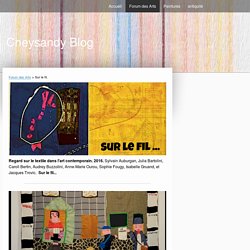
Gallery of the Louvre, 1831–1833. “There were no museums here, as yet, in the 1830s, and no color representations of paintings.

So he was going to bring the culture of Europe — mainly the Renaissance Italian masterpieces in the Louvre collection — back to the United States for the benefit of his countrymen.”David McCullough, The Greater Journey : Americans in Paris. Les pionniers d’un art américain. “He had to go through the entire collection of the Louvre, which was enormous, but well over a thousand paintings, and pick out those masterpieces which he thought merited the attention of his countrymen back home. Tommies Bathing, 1918. Cheyartstack. Cheyartstack. Francis Bacon Biography, Art, and Analysis of Works. "An illustrational form tells you through the intelligence immediately what the form is about, whereas a non-illustrational form works first upon sensation and then slowly leaks back into the fact.
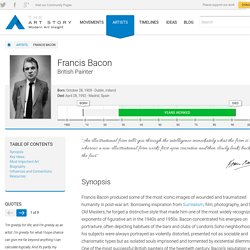
" Doc Fluxus. AliceWolfeThesis. DUANE HANSON, Supermarket lady, 1969 et sa fiche de révision. Par cette sculpture, Hanson dénonce la société de consommation : Les produits agro-alimentaires sont fabriqués en masse aux Etats-Unis et bouleversent les habitudes des consommateurs avec l'apparition des centre commerciaux.
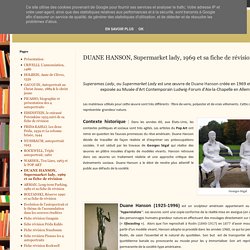
C'est ici que D. Hanson nous transporte avec cette sculpture, ou le panier de la ménagère a été remplacé par un caddie qui déborde de nourriture. Cette personne peut être n'importe quelle américaine de classe moyenne et il n'est pas difficile pour le spectateur de s'identifier. Il ne lui est pas non plus difficile de grimacer devant cette silhouette tassée, la cigarette aux lèvres ainsi que devant ce regard vide malgré le caddie plein! Cette célèbre sculpture d'Hanson se présente aux spectateurs comme une vérité crue, dérangeante. ArtDB - Le pied-bot. Jacques-Laurent Agasse (1767-1849) - The Nubian Giraffe. Description Description This famous giraffe calf was sent by Mehemet Ali, Pasha of Egypt, to George IV; it arrived in England in August 1827 and was installed at George IV’s menagerie in Windsor but died two years later.
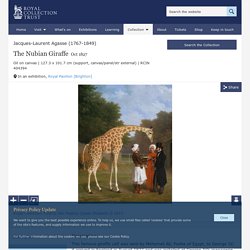
In 1827 Agasse painted the entire entourage surrounding this exotic animal: two Egyptian cows who acted as wet-nurses; two Arab keepers and the menagerie owner, Edward Cross (1773-1854), who supervised the giraffe’s brief time in Windsor. This is the portrait of a noble animal’s captivity, with solicitous keepers trying to persuade him to drink or perhaps examining his urine. The fact that his immense neck is bent is not an accident but a symbol of his condition. Provenance Commissioned by George IV in 1827 Physical properties. Agasse, Jacques Laurent : Fine Arts, 17th-18th c. The Nubian Giraffe by Jacques-Laurent Agasse. A Studio Visit with Ellsworth Kelly. Ellsworth Kelly, the painter and sculptor of implacably beautiful abstractions, is, except for Jasper Johns, the last hero standing of the mighty American avant-garde that succeeded Abstract Expressionism.

Postscript: Ellsworth Kelly.
Arte povera. 1 of 3 Arte povera means literally ‘poor art’ but the word poor here refers to the movement’s signature exploration of a wide range of materials beyond the quasi-precious traditional ones of oil paint on canvas, bronze, or carved marble.
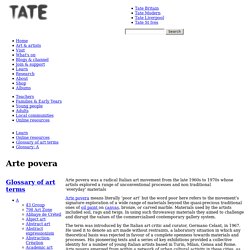
Materials used by the artists included soil, rags and twigs. In using such throwaway materials they aimed to challenge and disrupt the values of the commercialised contemporary gallery system. The term was introduced by the Italian art critic and curator, Germano Celant, in 1967. He used it to denote an art made without restraints, a laboratory situation in which any theoretical basis was rejected in favour of a complete openness towards materials and processes.
Arte Povera Movement, Artists and Major Works. Floor Tautology (1967) Artist: Luciano Fabro Artwork description & Analysis: By the time he joined the Arte Povera group, Luciano Fabro was already a well-known artist associated with the likes of Piero Manzoni and Lucio Fontana, two important precursors of the movement.
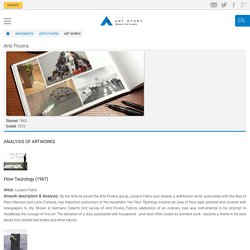
Arte Povera. Dossiers pédagogiques/Collections du Musée Un mouvement, une période L'Arte Povera ou la guérilla comme stratégie de l'art.
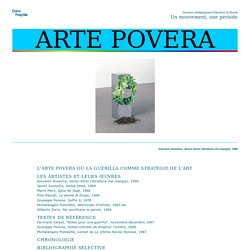
Alighiero E. Boetti Biography - Infos - Art Market. Alighiero Boetti - Works - Gladstone Gallery. Alighiero Boetti: Game Plan. Alighiero Boetti: Game Plan. “First of all I prefer thought.
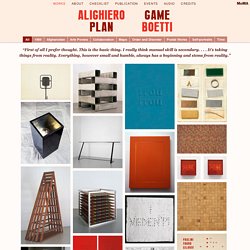
This is the basic thing. I really think manual skill is secondary. . . . It’s taking things from reality. Everything, however small and humble, always has a beginning and stems from reality.” Aparences: Art, histoire et actualité culturelle. La grande époque du portrait anglais Au XVIIIe siècle, l’école anglaise se fait une gloire du portrait dont la tradition s’était établie à la fin du XVIIe siècle.
Les plus grands interprètes du portrait anglais, un genre directement lié aux séjours londoniens de Holbein et de Van Dyck, sont Joshua Reynolds (1723-1792) et Thomas Gainsborough. La révolution industrielle anglaise de la seconde moitié du XVIIIe siècle modifie les équilibres sociaux et ouvre un nouveau rapport entre les classes bourgeoises et l’art. HistoireArts Liste oeuvres 114594. Bassano Jacopo. 1548. Deux chiens de chasse liés à une souche. Rosso Fiorentino. 1518. Portrait of a Young Man holding a Letter.
A young man looks directly out of the painting, capturing us with his gaze. We have interrupted him reading a letter. He seems detached; his reactions, elusive. The luxury of the young man's watered silk and damask jacket indicates wealth and status. The letter in his hands, as in other portraits by Rosso Fiorentino, hints at a literary, political, or legal profession for the sitter.